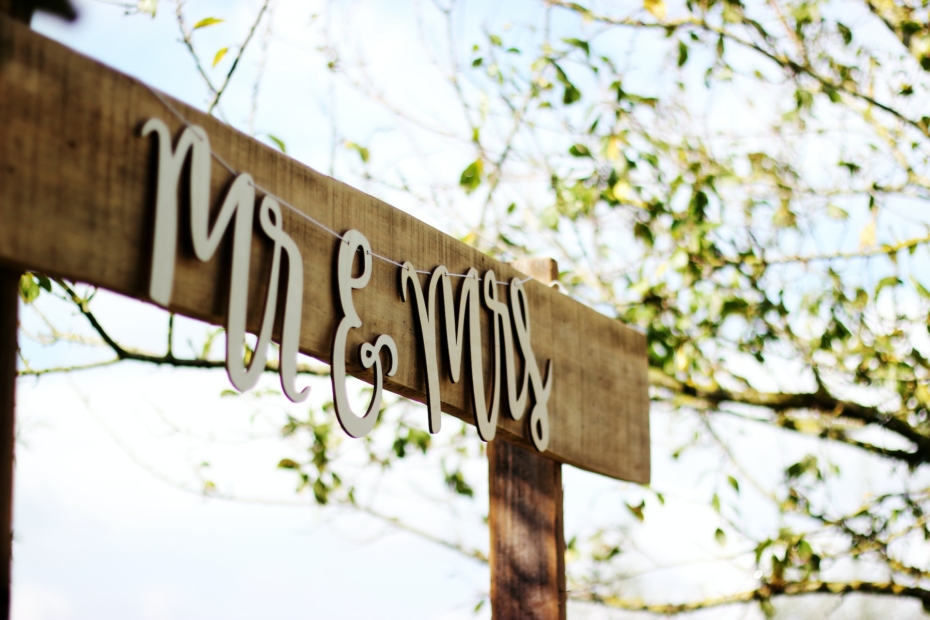A separation and the subsequent divorce proceedings are difficult times and always involve the sensitive issue of finances. The assets are to be divided fairly and the pension equalization must be carried out. Therefore, the dissolution of marriage is not least about how to deal with the pension fund. After all, pension provision should also be secured after the separation.
This article informs those affected about the consequences of separation and in particular shows what happens to the pension fund assets.
Contents
- 1 The most important facts in brief
- 2 Divorce in Switzerland: Facts
- 3 Marriage: essential rights and obligations
- 4 Separation: significant effects
- 4.1 If both are in agreement: Procedure of an amicable divorce
- 4.2 Both must provide for their own maintenance after the divorce
- 4.3 The division of property is regulated in Switzerland by the matrimonial property law
- 4.4 What does AHV splitting mean in the event of divorce?
- 4.5 Maintenance obligation for joint children
- 4.6 Legal remedies in case of non-fulfillment of child support obligations
- 4.7 Prenuptial agreement: these points can be agreed
- 5 Divorce: not always amicable
- 6 What happens to debts in the event of divorce
- 7 Pension equalization for occupational pensions
- 7.1 Divorce and pension fund: equitable distribution of pension assets
- 7.2 Components of the pension equalization
- 7.3 Pension equalization in the event of a disability pension
- 7.4 Pension equalization in the case of an existing retirement pension
- 7.5 Divorce and pension fund: in exceptional cases there is no division
- 7.6 Mutually agreed waiver of the termination benefit
- 8 The third pillar after divorce
- 9 All parties benefit from well-considered solutions
The most important facts in brief
- Almost every second marriage in Switzerland ends in divorce.
- The average age of spouses in divorce proceedings has risen.
- Higher average age means greater challenges for pension distribution.
- Spouses can make individual arrangements within the framework of legal requirements.
- Proper handling of the pension fund secures retirement provision and standard of living in old age.

Divorce in Switzerland: Facts
In Switzerland, the divorce rate remained at a high, constant level until the mid-1960s. It then increased significantly, reaching a high of well over 50 percent as of 2011. In the past 10 years, however, the number of divorces has declined again and is currently around 40 percent.
In a global comparison, Switzerland’s divorce figures are in the midfield. France, Spain, Australia and Sweden, for example, have higher divorce rates. In Russia, the rate is twice as high as in Switzerland. And in the USA, too, around 50 percent more people divorce than in Switzerland.
Average age at divorce has risen
The age at which Swiss spouses divorce has shifted backwards in recent years. The average age is around 46. This means that men and women are still around eight years older at the time of divorce than they were in the 1970s. This can be explained in particular by the fact that couples are also marrying later.
Paying attention to divorce consequences at older ages
The tendency for older age at the time of divorce brings special challenges for the division of finances. As a result, the retirement savings already accumulated are often higher and the time to retirement is shorter. This means that for divorcees, the issue of pension funds plays a major role.

Marriage: essential rights and obligations
In Switzerland, marriage is possible from the age of 18. The principle of equality applies, which means that men and women have the same rights, which must also be taken into account when it comes to finances.
Major financial implications of marriage are thus:
- Family maintenance: spouses can agree on who should contribute how much to the family’s maintenance – however, both are equally obliged to do so.
- Children: Both parents have the same duty of care. This applies to care, nurturing and education, which results in a maintenance obligation.
- Matrimonial property regime: The spouses jointly determine the matrimonial property regime. In this way, they determine who owns what property and how the assets and debts are divided both in the event of divorce and death. Swiss law provides for the following matrimonial property regimes: joint ownership, community of property and separation of property.
- Occupational and private pension provision: the second and third pillar assets earned during the marriage also count towards the joint pension assets.

Separation: significant effects
The above-mentioned rights and obligations already give an idea of the effects of a divorce on finances and what things need to be settled.
If both are in agreement: Procedure of an amicable divorce
Provided both spouses agree to the divorce, they jointly file a petition for divorce. In the so-called divorce convention signed by both, no reasons for the divorce need to be given.
Furthermore, the spouses describe on a jointly written document (divorce agreement) the points on which they have agreed:
- Dissolution of the matrimonial property regime
- Division of occupational benefits
- Maintenance and custody of children
- other points, for example, who will remain in the marital home
As a rule, the court adheres to the divorce agreement in the divorce decree. However, it checks the balance. For example, a waiver of child support is usually rejected, as is a retirement provision that is not balanced.
Both must provide for their own maintenance after the divorce
After divorce, personal responsibility generally applies. However, depending on the age, duration of the marriage and distribution of responsibilities, a court ruling may require one spouse to make temporary alimony payments. Both parents are responsible for the maintenance of the children until they reach the age of majority or until the end of their education. Depending on the personal possibilities, the court examines the possible agreement between the parents, but makes the final decision. This is to ensure that the needs of the children are met in any case.
The division of property is regulated in Switzerland by the matrimonial property law
The matrimonial property law regulates the financial relations between the spouses during the marriage period as well as the division in case of divorce and death. The division of assets upon separation depends on which matrimonial property regime the spouses have chosen.
Swiss law recognizes three different property regimes:
- Acquired property: This matrimonial property regime is also referred to as the “ordinary matrimonial property regime.” It always applies if no other matrimonial property regime has been agreed in a marriage contract. The assets consist of personal property and acquisitions. Personal property is all assets that were brought into the marriage and thus remain in personal ownership. Inheritances and gifts also count as personal property. Everything that was earned during the marriage is referred to as acquired property and must be divided in half in the event of divorce.
- Community of property: The difference between community of property and community of inheritance is that no distinction is made between inheritance and personal property. Rather, everything is divided in half in the event of divorce. It is possible to exclude individual assets from the community of property by contract.
- Separation of property: As with community of property, the separation of property must be agreed in a marriage contract. The assets of the spouses remain separate, as they were before the marriage. Likewise, you also operate a separate asset accumulation during the marriage.
The professional and private pensions are also divided in the context of a divorce, as will be described in more detail later. Furthermore, debts must also be divided fairly; you will also receive further information on this in a subsequent chapter.
What does AHV splitting mean in the event of divorce?
The joint claims in the AHV are redistributed in the event of divorce in order to arrive at a fair allocation. For this purpose, an income distribution, the so-called splitting, takes place within the marriage. In order to determine the pension entitlements for old age or invalidity of divorced persons, the income earned by both spouses during the marriage is divided and attributed to each half. Only the years in which both partners were insured with the AHV/IV are taken into account.
The income in the year of the marriage and in the year of the divorce is not divided. Splitting is therefore only possible if the marriage has lasted at least one complete calendar year .
Maintenance obligation for joint children
Regardless of any agreements on post-marital maintenance between the divorced partners, parents are always obliged to provide maintenance for their children. This obligation continues until the child reaches the age of majority or completes his or her first vocational training.
The parent obliged to pay is the one who does not live with the child. The parent who forms a domestic community with the child fulfills his or her obligation to pay child support by raising the child as well as by providing personal care. The court shall determine the amount of child support without affecting the subsistence level of the parent liable to pay.
Legal remedies in case of non-fulfillment of child support obligations
If the parent liable to pay fails to meet his or her obligations, the person entitled to child support may seek collection assistance from the respective canton. Each canton must offer free assistance for the collection of child support. Furthermore, the cantons offer advances for child alimony to bridge the gap.
In certain cases, a debtor ‘s order can be applied for against the arrears payer at the competent civil court. Through this order, the child support is deducted directly from the salary or wages of the parent liable to pay and forwarded to the applicant.
If there are already long-term arrears in child support payments, debt collection proceedings can be initiated. The debt collection office at the place of residence of the parent liable to pay is responsible for this. If the parent continues to fail to meet his or her obligation to pay, criminal proceedings may be initiated.
Prenuptial agreement: these points can be agreed
Although a contractual agreement is unromantic, it can contribute to a relatively conflict-free separation in the event of a divorce, since the essential matters have been settled in advance. This can often reduce the high costs of divorce proceedings. Furthermore, fundamental property issues as well as the distribution of the inheritance can be clarified.
A prenuptial agreement regulates
- the matrimonial property regime
- the division of assets in the event of divorce
- the inheritance claims of the divorced spouses
- the inheritance claims in a marital union

Divorce: not always amicable
In Switzerland, spouses can in principle divorce without a lawyer. However, due to the complexity, an experienced specialist lawyer is advisable in most cases. If the spouses do not agree, the only option is to file for divorce. If one spouse does not agree with the divorce in general, a separation period of two years must first be observed. After that, the person wishing to divorce can sue for separation of the marriage.
While in the case of unity a divorce can be settled for about 2,500 francs, the costs quickly add up to 10,000 francs or more in the case of disputes. The costs are shared in the case of unity – in the case of divorce suits, the losing party bears the total costs.
Since both spouses are concerned about their future existence in the context of divorce proceedings, property issues are also frequently disputed. Here it is a question of the allocation of personal property and acquisitions or the valuation and division of real estate assets. A prenuptial agreement can help to save costs and nerves here.

What happens to debts in the event of divorce
After a divorce, spouses do not necessarily have to pay for the debts incurred by the other partner. Spouses are only liable for jointly concluded loan agreements, as is often the case with mortgage loans. However, for debts that are part of joint household management, such as household debts, insurance premiums or outstanding tax bills, both must be jointly liable. A division does not arise here.

Pension equalization for occupational pensions
Pension equalization refers to the division of the pension assets accumulated during the marriage. In the event of a divorce, the property settlement takes place first, followed by the pension equalization. Finally, the maintenance contribution is determined.
Divorce and pension fund: equitable distribution of pension assets
Pension equalization balances out the often differing assets that the couple has accumulated during the course of the marriage. If one person was primarily responsible for childcare, caring for dependents or managing the household, they often did not have the opportunity to build up a large pension fund balance.
In contrast, the person who was more gainfully employed during the marriage period usually accumulated a larger balance. Pension equalization divides the assets accumulated during the marriage equally between the spouses in order to compensate for the pension losses of the person who was not or only slightly gainfully employed. This ensures a fair distribution of the pension assets for both spouses.
Components of the pension equalization
The entitlements of the compulsory and non-compulsory second pillar that are divided include:
- the termination benefit (retirement assets accumulated during the marriage at the time the divorce proceedings were initiated)
- the vested benefit credit (with a vested benefit institution)
- theadvance withdrawals for home ownership (payment by the pension fund to purchase owner-occupied residential property)
In order to calculate the termination benefit to be divided, any one-time contributions made from personal assets are deducted from the result. Any further capital payments made during the marriage are also deducted. Since only entitlements acquired during the marriage are relevant for pension equalization, assets prior to the marriage (including interest) are also not taken into account.
Pension equalization in the event of a disability pension
If a disability pension is drawn before the pension is drawn upon divorce, a “hypothetical termination benefit” must first be drawn up. This is the termination benefit in the event of regaining earning capacity. This calculated termination benefit is then divided in half. The division has the effect of reducing the disability pension.
Pension equalization in the case of an existing retirement pension
If one spouse is already receiving a retirement pension or disability pension and is already of retirement age, the pension is divided. In this case, half of the pension is considered as a guideline, but the court makes a discretionary decision in this case. Provided that both spouses receive a pension, a settlement can be made without any problems. However, an equalization of pension on one side and termination benefit on the other side requires the consent of both pension funds.
Divorce and pension fund: in exceptional cases there is no division
In exceptional cases, the court may deviate from the rule of splitting the pension fund assets in half.
These exceptions are:
- Over-half division: if one spouse was unable to work because of caring for several children, the court may order an over-half division. In doing so, the court will take into account that the spouse subject to the equalization obligation will be left with adequate retirement provisions.
- Refusal of equaldivision: If there are important reasons, the court may refuse equal division. This may be the case, for example, if one spouse is about to retire and the other is still able to save for his or her own retirement on account of his or her young age.
- Impossibility of division: If it is not possible to equalize the pension fund assets because, for example, the pension assets are located abroad, the person subject to the equalization obligation owes a lump-sum settlement as an alternative.
- Unreasonableness of the division: Unreasonable in this context could be, for example, the reduction of an already ongoing disability pension. However, the entitlement to compensation through free capital remains, which can also be paid in installments under certain circumstances.
Mutually agreed waiver of the termination benefit
Although the legal principle states that BVG assets accumulated during the marriage period should be divided at the time the divorce petition is filed, spouses may agree to a waiver.
The law allows spouses to waive division if both have adequate retirement or disability insurance. In this regard, the court is free to deny the waiver of division in case of doubt. The question, then, is what provision is adequate. In principle, this is the case if the person waiving benefits from other advantages, and thus a proper retirement is guaranteed.
To assess what is an appropriate retirement provision, below are some key points:
- Long marital periods usually require equitable compensation.
- For short periods of marriage, personal responsibility weighs more heavily (especially if the marriage was childless).
- If both spouses have reached retirement age, the principle of division is often without alternative, since neither can build up new pension entitlements.
- In the case of a considerable age difference, a half split is usually not appropriate, since each has adequate pension provision for himself or herself or will still benefit from it in the future.
- In the case of considerable income or assets on the part of the person entitled to equalization, it can be assumed that old-age provision is possible without any problems. This justifies a waiver of equalization.
- If one spouse is self-employed, the value of the business may be a substitute for retirement assets and thus a waiver of equalization is legitimate.
- If both spouses have excellent incomes, there is no need to equalize additional pension assets.
- If one spouse is particularly favored in the division of assets (such as leaving a condominium as the sole owner), a waiver of equalization of pension assets is justified.

The third pillar after divorce
As private pension funds, the third pillar funds count towards the matrimonial property settlement. The assets saved during the marriage are therefore halved in the event of divorce. Other arrangements can be made in the marriage contract. The taxes due on the subsequent payout must be taken into account in the division.
If Pillar 3a assets are transferred during the division of property, this capital must remain tied up. The bank or insurance company is therefore obliged to transfer the money to an occupational pillar institution, i.e. a pension fund or, if applicable, a vested benefits institution.
Learn more now: Vested benefits at Everon

All parties benefit from well-considered solutions
Because of the emotional nature of the matter, it may seem difficult to remain objective during a divorce. But spouses who treat each other with respect during the divorce proceedings and also think about retirement planning during this phase save time, money and nerves.
The Swiss pension system, in conjunction with the matrimonial property regime, allows for many structuring options. These can be used to give all parties a positive perspective. The courts take care to ensure that there is no discernible injustice. Parents should bear in mind that money lost through costly court proceedings is ultimately also missed by their own children.

